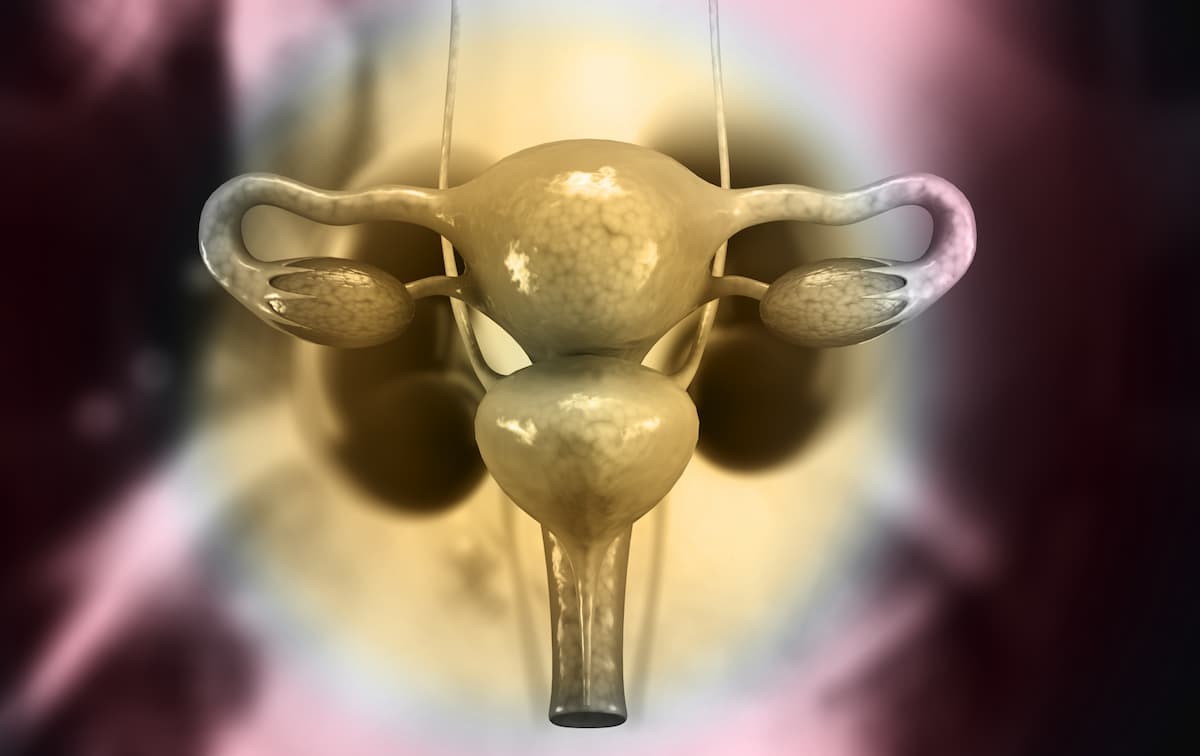Multidisciplinary Surgery May Improve Survival in Advanced Ovarian Cancer
Collaboration among surgical specialties allows for safe removal of all visible tumors, thus improving survival in patients with advanced ovarian cancer, says Donal J. Brennan, MB, PhD.
"We believe that collaboration between different surgical specialties allows us to safely perform aggressive operations to remove all visible tumors from the abdomen, which is the single greatest predictor of improved survival," according to Donal J. Brennan, MB, PhD.

An intraoperative, multidisciplinary surgical approach elicited improvements in overall survival (OS), progression-free survival (PFS), and complete resection rates among patients with advanced ovarian cancer, according to findings from a retrospective study published in Annals of Surgical Oncology.1
Investigators reported a primary cytoreductive surgery (CRS) rate of 38.0% in a cohort of retrospectively collated patients treated from 2006 to 2015 (cohort A; n = 146), which increased to 46.5% in a cohort of patients treated from January 2017 to September 2021 with the multidisciplinary approach (cohort B; n = 174). Additionally, the complete macroscopic resection rate was 58.9% in cohort A compared with 78.7% in cohort B (P <.001). The rate of suboptimal cytoreduction also decreased from 21.9% in cohort A to 8.6% in cohort B (P ≤.001).
Overall, 75.0% and 48.8% of patients in cohort A and cohort B, respectively, experienced disease progression at 3 years (P <.001). Moreover, 64.5% and 24.0% of patients in each respective cohort died at the same time point (P <.001).
Investigators highlighted that age, residual disease, and multidisciplinary surgical team input independently predicted PFS based on Cox multivariate analysis (HR, 0.31; 95% CI, 0.21-0.43; P <.001). Additionally, age and multidisciplinary input were found to be independent predictors of OS (HR, 0.29; 95% CI, 0.20-0.44; P <.001).
“Ovarian cancer is a complicated disease that requires input from multiple specialties including medical oncology, pathology, radiology and surgery,” senior author Donal J. Brennan, MB, PhD, Consultant Gynaecological Oncologist at the Mater University Hospital and Professor of Gynaecological Oncology at University College Dublin School of Medicine, said in a press release on these findings.2 “We believe that collaboration between different surgical specialties allows us to safely perform aggressive operations to remove all visible tumors from the abdomen, which is the single greatest predictor of improved survival.”
Investigators assessed patients in the previously published cohort A, who were treated before the implementation of the multidisciplinary approach, and those who underwent multidisciplinary surgery in cohort B. All patients with stage IIIA or higher ovarian cancer received treatment with primary CRS or neoadjuvant chemotherapy prior to interval cytoreduction with or without hyperthermic intraperitoneal chemotherapy (HIPEC).
Neoadjuvant and adjuvant chemotherapy consisted of carboplatin area under the curve of 5 or 6 plus 175 mg/m2 of paclitaxel every 3 weeks for 6 cycles. Patients in cohort B with CC-1 resections had the option of receiving maintenance bevacizumab (Avastin).
The median patient age was 60 years (range, 28-84) in cohort A and 61 years (range, 29-90) in cohort B (P = .518). Most patients in cohort A and cohort B, respectively, had FIGO stage III disease (77.0% vs 75.0%; P = .603), serous disease (78.7% vs 86.2%; P = .485), underwent interval surgery (62.0% vs 53.4%; P = .104), and had no macroscopic residual disease (58.9% vs 79.8%; P <.001). Additionally, the most common surgical procedures included abdominopelvic peritonectomy (64.0%), large bowel resection (45.9%), appendectomy (44.8%), and diaphragmatic stripping (33.9%).
In a subset analysis, 68.5% (n = 37/54) of patients who received primary CRS in cohort A experienced disease progression at 3 years; the corresponding figure was 48.0% (n = 39/81) for those undergoing primary CRS in cohort B (P = .031). Additionally, 59.0% (n = 32/54) and 20.9% (n = 17/81) of patients who received primary CRS in cohort A and cohort B, respectively, died at 3 years (P <.001). Univariate analysis indicated that age, multidisciplinary input, and residual disease were significant predictors of OS and PFS in those undergoing primary CRS.
Among those receiving interval CRS, 80.0% (n = 72/90) of those in cohort A experienced disease progression at 3 years compared with 50.0% (n = 47/93) of patients in cohort B. Additionally, 67.0% (n = 61/90) and 28.0% (n = 26/93) of patients in cohort A and cohort B, respectively, died at 3 years (P <.001). Multidisciplinary input was the only independent factor predictive of PFS (HR, 0.50; 95% CI, 0.34-0.71; P <.001) and OS (HR, 0.314; 95% CI, 0.19-0.49; P <.001) among patients undergoing interval CRS.
References
- Mulligan K, Corry E, Donohue F, et al. Multidisciplinary surgical approach to increase survival for advanced ovarian cancer in a tertiary gynaecological oncology centre. Ann Surg Oncol. Published online October 24, 2023. doi:10.1245/s10434-023-14423-1
- Ovarian cancer patients 70% less likely to die with aggressive surgical approach. News release. University College Dublin. October 27, 2023. Accessed October 31, 2023. https://shorturl.at/bgoT9